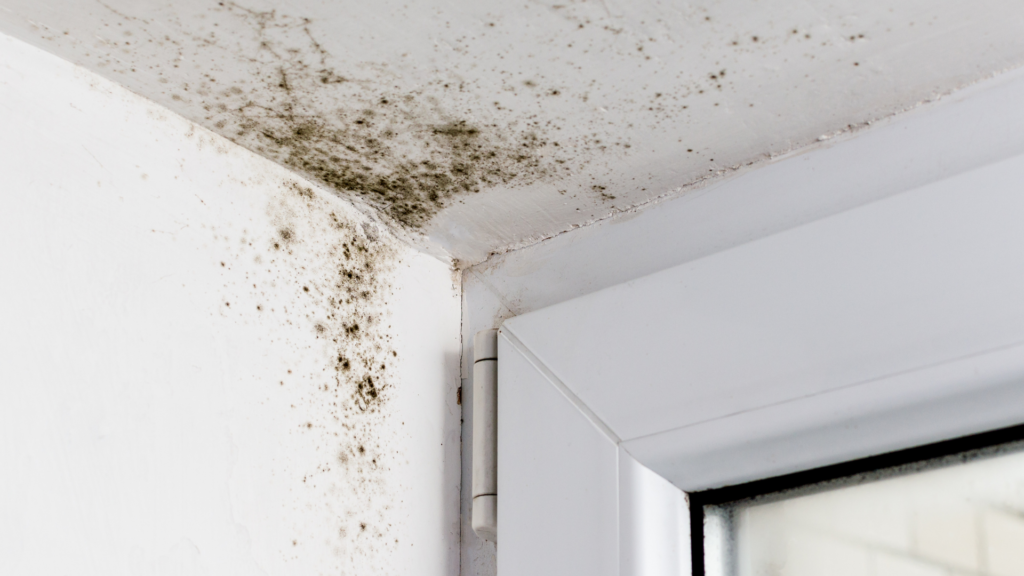One of the unfortunate side effects of living in a humid climate is indoor mold growth. After major storms, excess moisture from flooding tends to soak into a home’s structure and cause long-term damage if left unattended. Fortunately, you can take steps to prevent mold damage in your home, even if it storms often. Let’s take a closer look.
How Can You Prevent Mold Damage?
The key here is in preventing mold damage, not just repairing it. Not only does mold compromise the integrity of your home, but it also poses a health risk to you and your family. To avoid allergic reactions, respiratory infections, and expensive household repairs, take the following steps to prevent mold damage.
1. Seal your doors and windows.
If the air outside is naturally moist, any drafts from the doors or windows can lead to damp inside air. Particularly during heavy rainfall, make sure your doors and windows are sealed with rubber to prevent mold from breeding in dark corners.
2. Ventilate often.
One of the most important things you can do to prevent and combat mold growth is to ventilate. On nice, dry days, open your windows, run your attic fan, and let the fresh air in. Run small fans on other days. Allowing the air in your home to circulate rather than remaining stagnant keeps mold from festering.
3. Run a dehumidifier in dark, damp, cool areas.
If necessary, invest in a dehumidifier to remove excess moisture from the air. Dehumidifiers are particularly effective in areas naturally prone to mold growth, such as basements and bathrooms. Always run the fan in your bathroom during a bath or a shower, as mold loves to form between tiles over time.
4. Inspect your home visually after each storm.
Leaks in distant corners of your home often go unnoticed for months. After each storm, check every room in your house to make sure no hidden leaks are inviting mold to develop.
5. After major or minor flooding, schedule a professional mold assessment.
If you suspect a hidden mold problem behind drywall or in your ceiling, don’t ignore your gut. Instead, hire a professional mold assessor to inspect the problem and tell you what to do.
6. Trust your nose.
Mold often tells on itself through a musty odor. Trust your nose if you come home after a storm and smell mildew.
7. Clean up spills immediately.
Of course, make sure you clean up spills, accidents, etc. as soon as they occur. Particularly on carpet and upholstered furniture, moisture becomes trapped and invites mold to form deep within the fibers. Always dry wet spills quickly and thoroughly.
8. Avoid laying carpet in areas prone to flooding.
If you purchase a home with thick carpet in a flood-prone basement, you don’t have much say in the matter. However, if you intend to replace your flooring soon, ask yourself what is practical. Placing carpet in naturally damp areas is just asking for a mold problem.
9. Elevate your furniture if you know a storm is approaching.
Finally, if there is a bad storm in the forecast and you have the time, place cloth furniture on large bricks to prevent mold and moisture damage.
What to Do in the Event of Mold Damage
If the mold is in a small, concentrated amount, remove it using a bleach or vinegar solution and hot water. Take care to thoroughly dry the area once the mold has been removed.
Sometimes, however, there is just no way to outsmart mother nature. If you find yourself dealing with a mold problem, do not put off repairing it. Doing so could come at a great cost to both your health and your home. Instead, schedule a professional storm damage assessor to determine the extent and cost of the problem. Then, enlist the help of a mold remediator.
What is Our Mission?
Disaster Management Recovery Group is here to assess your storm damage and determine the next step. If you need a roofing evaluation or have suffered exterior damage due to storms or other natural disasters, contact us and schedule a storm damage evaluation and start on the road to recovery.


